
- Home
- India
- World
- Premium
- THE FEDERAL SPECIAL
- Analysis
- States
- Perspective
- Videos
- Sports
- Education
- Entertainment
- Elections
- Features
- Health
- Business
- Series
- In memoriam: Sheikh Mujibur Rahman
- Bishnoi's Men
- NEET TANGLE
- Economy Series
- Earth Day
- Kashmir’s Frozen Turbulence
- India@75
- The legend of Ramjanmabhoomi
- Liberalisation@30
- How to tame a dragon
- Celebrating biodiversity
- Farm Matters
- 50 days of solitude
- Bringing Migrants Home
- Budget 2020
- Jharkhand Votes
- The Federal Investigates
- The Federal Impact
- Vanishing Sand
- Gandhi @ 150
- Andhra Today
- Field report
- Operation Gulmarg
- Pandemic @1 Mn in India
- The Federal Year-End
- The Zero Year
- Science
- Brand studio
- Newsletter
- Elections 2024
- Events
- Home
- IndiaIndia
- World
- Analysis
- StatesStates
- PerspectivePerspective
- VideosVideos
- Sports
- Education
- Entertainment
- ElectionsElections
- Features
- Health
- BusinessBusiness
- Premium
- Loading...
Premium - Events
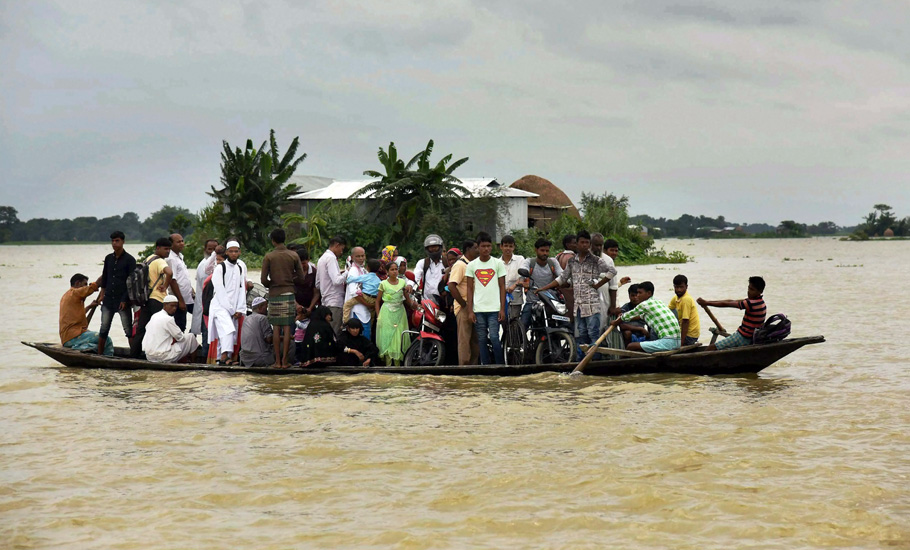
Assam floods: ‘The challenge is twice the size of Brahmaputra’
The devastation caused by the floods in Assam is terrible. This year alone, more than 56 lakh people were affected in 30 of the 33 districts since May and 109 persons have died.

While the monsoon season has been worse than usual this year, the devastating floods in Assam have claimed 107 lives since April, affecting more than 45 lakh people across 30 districts. This has been the story of Assam every monsoon season for the past many decades. However, some experts feel that more than the floods, erosion of land mass with the flow of the Brahmaputra is a bigger...
While the monsoon season has been worse than usual this year, the devastating floods in Assam have claimed 107 lives since April, affecting more than 45 lakh people across 30 districts. This has been the story of Assam every monsoon season for the past many decades. However, some experts feel that more than the floods, erosion of land mass with the flow of the Brahmaputra is a bigger problem. Every year, the Brahmaputra and its tributaries create so much havoc and erosion that the state loses around 8,000 hectares of land mass. We are republishing a story from two years back. The situation, sadly, was not any different even then.
For 62-year old Shamsher Ali of Assam’s Dhubri district, there was hardly any time to lose as flood waters rushed into his home in July. Although Ali has lost his home to the swirling waters of the Brahmaputra at least five times in as many decades, this time the calamity looked far greater amid a pandemic that has caught the world unawares.
Until last month, Ali used to live on Kalaikhaowa char (sand bar) close to the India-Bangladesh border. But as the Brahmaputra gobbled up the entire sand bar, Ali and his family were forced to leave behind the remnants that they called home not too long ago.
“Life has been terribly cruel to people like us. Every summer, I pray to God to spare us this one time,” he says.
In the past several years, Ali says, he has lost four bighas of land to erosion. Yet he has held the land documents close to his chest all these years even if those papers never helped him get any compensation. “I continue to pay tax for those plots. It will at least help me establish that I’m an Indian and I own land here,” he says, laying bare his fears of the possibility of being branded a Bangladeshi national once the National Register of Citizens (NRC) process resumes. (The final list was published almost a year ago but more than 19 lakh people — excluded from the list — are waiting for its notification to move forward.)
Every year, the Brahmaputra and its tributaries create so much havoc and erosion that the state loses around 8,000 hectares of land mass on a yearly basis. The land erosion, in certain areas, has widened the Brahmaputra — that is 5.46 km wide on average — to 15 km. The river banks are also dotted with chars formed by silt deposition from upstream. These chars rise up and get submerged every few years.
“Once the chars get swept away, the people living there are forced to leave their homes and move to a new char,” explains Parvin Sultana, assistant professor at the Pramathesh Barua College in Dhubri. “These are farmers who have lost land to erosion. Moving to the mainland is a difficult choice. Even when they do, buying land is almost impossible. All this adds up to an economic loss for a largely agrarian state. This is a reason why many such families are forced to encroach on government land and grazing reserves,” she adds.
Moreover, she adds, the lack of mapping of these people makes it even more difficult to identify them once they are displaced and move to different areas.
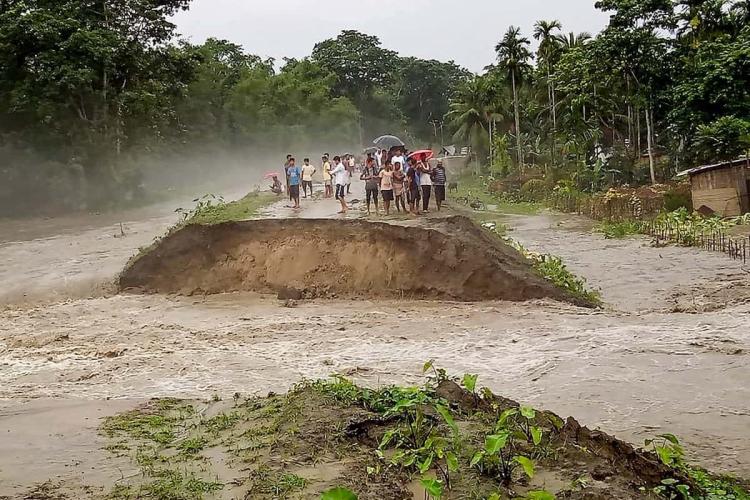
Swept away
The devastation caused by the floods is terrible. This year alone, more than 56 lakh people have been affected in 30 of the 33 districts in Assam since May and 109 persons have died. More than 2.62 lakh hectares of crops have also been damaged by the floods.
Other damages include: 2,027 roads in 30 districts, 231 embankments in 26 districts and more than 200 bridges or culverts in 26 districts.
Erosion has caused a major damage in Assam in the last several decades. Since 1951, Assam has lost 60 lakh bighas (more than 9.6 lakh hectares) to erosion. According to a retired bureaucrat, an estimated 10 lakh families have become landless over the years.
Former additional chief secretary CK Das, who served in the revenue department for a long time in different capacities, feels that erosion is a much bigger threat to Assam than floods.
“After floods, the affected people can recover from the losses that they suffer and they can go for alternative cultivation after the flood water recedes. But in case of erosion, those who lose their land have nothing to sustain and most farmers do not have any other skills to sustain themselves,” Das was quoted as saying by a local daily.
The beds of the river, he says, became shallow after the earthquakes of 1897 and 1950, which reduced the water carrying capacity and the problem of erosion aggravated.
If one examines the maps of the Survey of India since 1872, he adds, it can be seen that the width of Brahmaputra has been increasing in different parts through its course in Assam.
What has added to the problem is the construction of several big and small dams by upper riparian neighbour China in Tibet region. This is a big threat to the Brahmaputra’s ecosystem, making the river more unpredictable, claim experts. For instance, the changing colour of Siang river in Arunachal Pradesh (main tributary of Brahmaputra) that reportedly turned muddy is attributed to China’s construction activities on the upstream of Brahmaputra, which is known as Yarlung Tsangpo in Tibet.
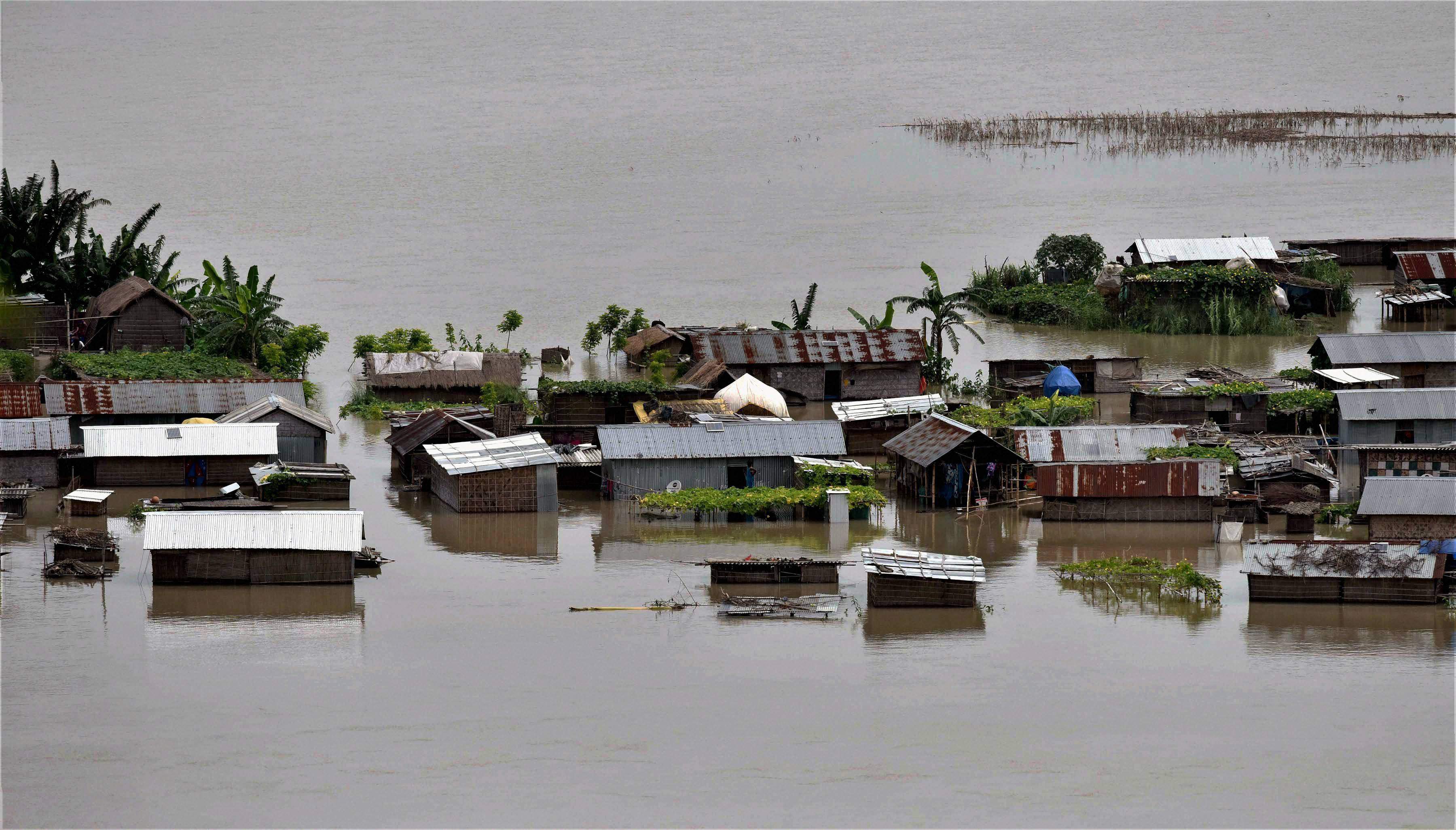
Flood management
Experts from various fields believe that it is difficult to contain floods altogether considering the state’s geographical and climatic conditions. Instead, they say, the focus should be on flood preparedness and minimising its impact.
Dr Jogendra Nath Sarma, a retired professor of applied geology at Dibrugarh University, cites the example of Bangladesh, which has put in place an effective and early warning mechanism.
It has also built flood shelters — large raised platforms where people can seek refuge from the on-rushing floodwaters — with proper facilities for humans and animals.
While such preparedness is largely missing on the ground in Assam, the government over the years has been more fixated on ambitious projects that haven’t yielded any results so far.
In 2017, the Assam government embarked on an ambitious ₹40,000 crore Brahmaputra dredging project to retain more water in the river. Chief Minister Sarbananda Sonowal claimed there was a great need to dredge the Brahmaputra as its water carrying capacity has reduced over the years due to loss of depth.
Union Jal Shakti Minister Gajendra Singh Shekhawat who visited the state last year to assess the flood damage also stressed on long-term solutions and said that pilot projects to dredge the river bed can also be carried out after hydro-graphics survey.
“After the assessment of the hydrologists, we can look for the solutions if dredging or other means can be applied. We can identify some locations and apply pilot projects so that a solution can be found. There were also some discussions on building some raised platforms not only for human habitations but also for the national parks. We have some positive results in this regard. We need to adopt similar actions,” Shekhawat had said.
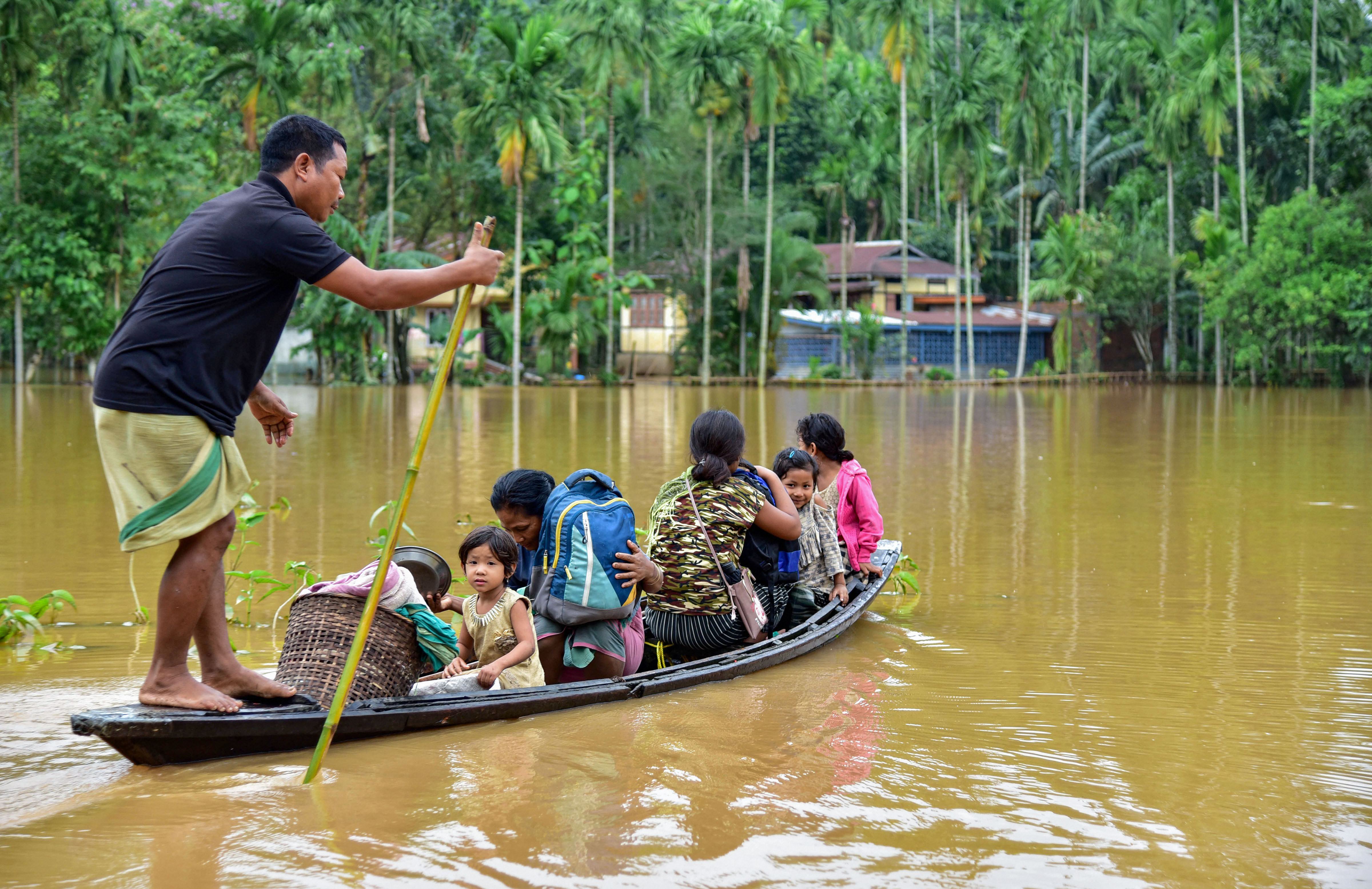
But again, not everyone is convinced that the project will yield the desired results as the Brahmaputra has the second-highest sediment yield per square kilometre in the world.
“Dredging is a superficial answer to the challenge of drainage congestion and managing floods. It will be a futile exercise because during monsoon there is a daily input of 2.12 million metric tons of sediments into the Brahmaputra,” says professor Dr Jogendra Nath Sarma.
The Centre is also planning to pass an ordinance to set up North East Water Management Authority in the upcoming session of Parliament. Sonowal earlier said such an initiative would lead to a “permanent solution to the flood and erosion problem” in the state.
Shekhawat has also promised to provide ₹346 crore immediately from his ministry to the Assam government as the first instalment under the Flood Management Programme (FMP).
Apart from that, Sonowal has appealed to the Union minister to allocate more funds to the state government to strengthen 5,000-km of embankments built since 1951 in the state, which will now be turned into road-cum-embankments.
Notwithstanding such mega promises made every now and then, flood victims continue to complain about inadequate relief and rehabilitation measures.
Not enough assistance
Even though the government claims to have provided major relief and rehabilitation packages to flood victims, many whom The Federal spoke to say they have never received any such assistance from the government.
“It’s a lengthy process. People who have links with government officials get the relief packages. Sometimes, we are helped by some NGOs,” says Ashadul Haque, 40, from Barpeta. He, however, adds that they were provided food and other necessary stuff by the government while at the relief camps.
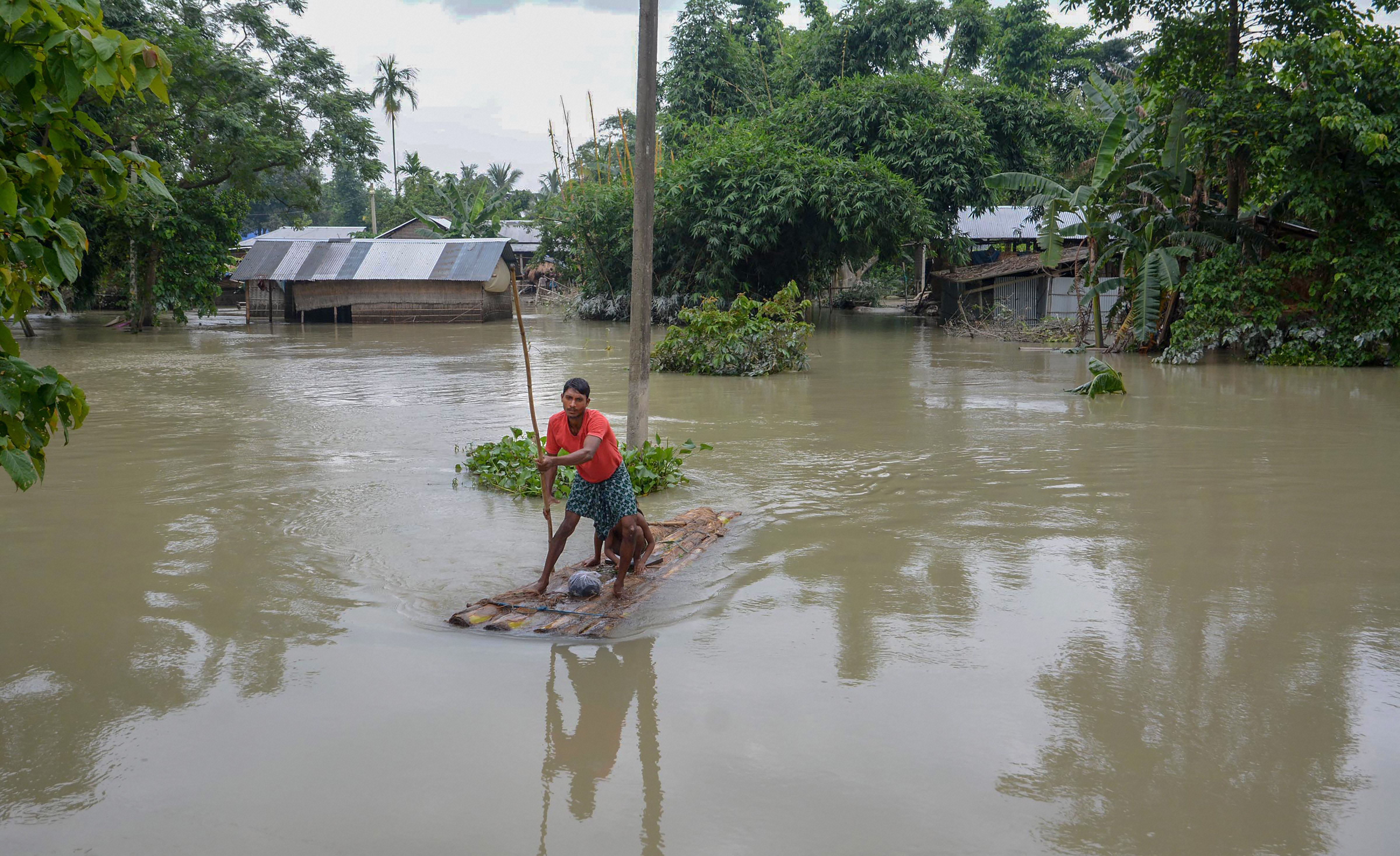
The opposition Congress has alleged that the funds provided by the Centre is not sufficient compared to the damage caused by the floods. Assam Congress president Ripun Bora says that the state has failed to get central aid for floods for a number of years.
“In 2014, the Assam government had sought ₹9,370 crore from the Prime Minister. However, not a single penny was released. Similarly, in 2015, the state government sought an additional ₹2,100 crore from the Centre but there was no release of funds. Again in 2016, the state government sought ₹5,038 crore from the Centre. This year also the state didn’t get a single penny,” Bora says.
Bora recalls that Prime Minister Narendra Modi, who visited Assam on August 1, 2017 to assess the flood situation, made several announcements—a Rs 2,350 crore package for flood-hit North East; an instant release of ₹250 crore for Assam floods; ₹400 crore for fighting erosion by the Brahmaputra and ₹100 crore for the study of the course of the Brahmaputra.
“However, even today the Centre hasn’t released the promised funds. Nor has the state government been able to put the right amount of pressure on the Centre to do so,” Bora says.
Many others contend that the funds released under the State Disaster Response Fund (SDRF) are not enough to address the problems and most of the amount is spent on repairing roads and embankments, among others.
Meanwhile, people like Shamsher Ali feel there is little hope that these big promises on paper will ever translate to reality.
“We hardly matter to governments. I have heard of so many schemes and programmes all these years but these never reach us.”
Ali is more miffed that nobody talks about the immediate problems. “This year they got one more excuse — coronavirus. But is anyone really concerned how flood victims crammed in temporary camps are supposed to maintain social distancing? There is no arrangement for basic things like drinking water and toilets,” he says.
For now, Ali has no choice but to wait for the waters to recede so that he could return and start rebuilding his home. The challenge, he says, is twice the size of the Brahmaputra and its wrath.
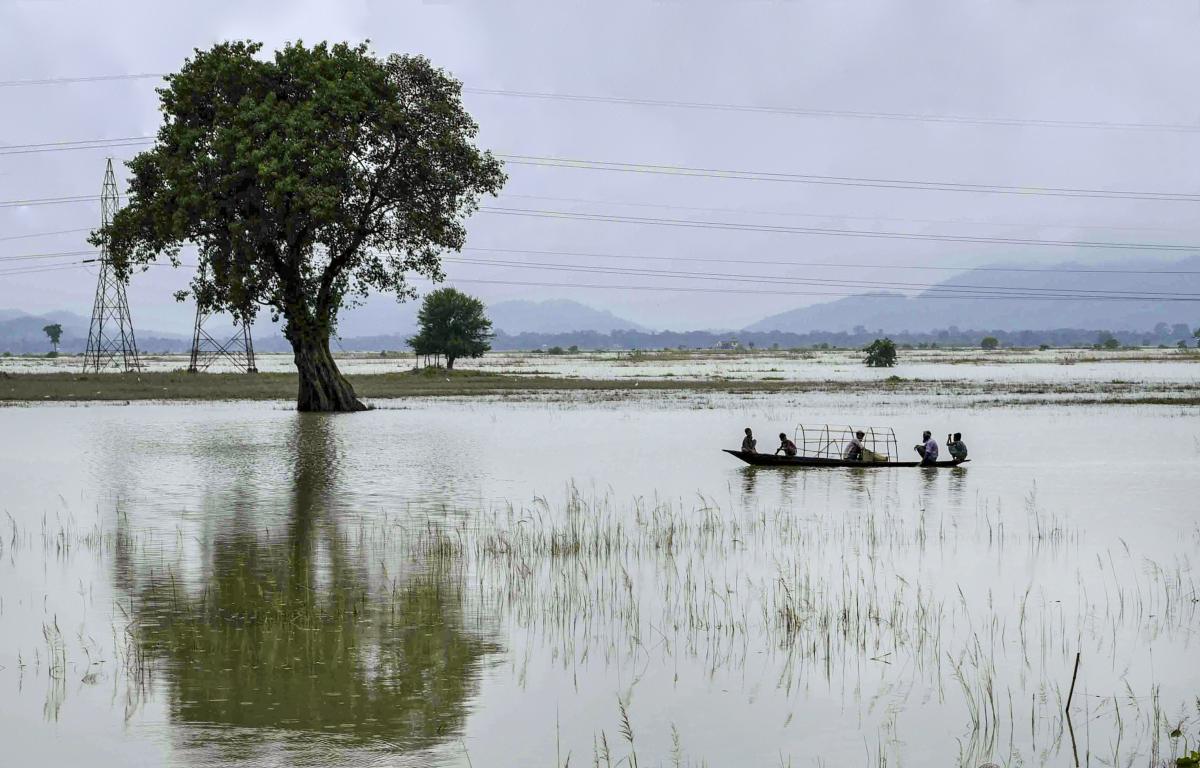
(The story first appeared on The Federal on August 6, 2020.)
